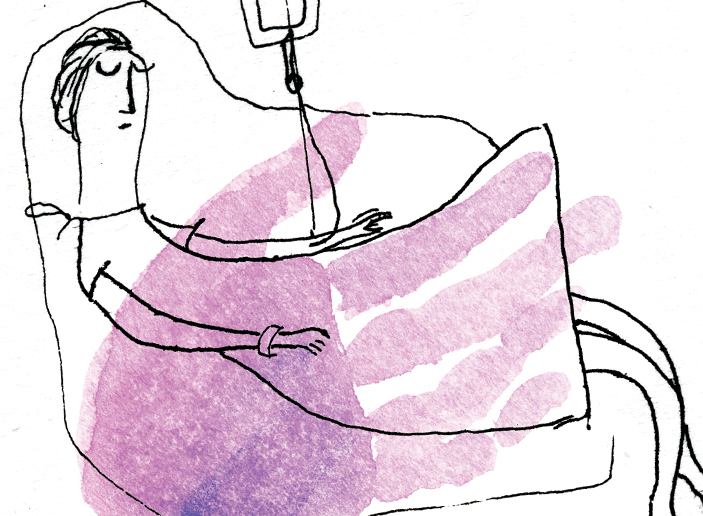Paying It Back
It was after midnight during my week of night shifts at Hasbro Children’s Hospital. There was a patient who had been under my team’s care for weeks. No lab or test was left undone, and still there was no answer for her unending fevers and pain. I went to visit her during a lull and found her mom sitting on the side of her bed, a lamp dimly lit in the corner. She had been there without fail every morning and night, her devotion unwavering. I sat down next to her. “How are you doing?” I asked. Small tears streamed down her face as she sat there stroking her daughter’s arm. “I am worried and exhausted, and I want to bring my baby home,” she whispered.
I told her I understood and that we wanted nothing more than to see that as well. I was going to stop there, but in that moment of vigil with this mother I thought of how worried my parents must have been as they paced the halls and slept in hospital cots by my bed for weeks. I usually never talk about my personal experiences with patients, but in that moment, witnessing her grief, I felt she needed more from me. “I could not say this to my parents when I was in the hospital for weeks as a child,” I began. “I was too young and in too much pain—but I still remember how much it meant to have them there with me. So since she cannot say this to you, I will: thank you. It means everything that you are here with her.” She sighed; a calm fell in the room amid the clicks of IV bags emptying, and our eyes met. “Thank you,” she said. “I have really needed that.”
There are times in medicine when we cannot cure a patient’s pain, whether it be physical or emotional. Yes, there are great joys and successes, but there are also times when no diagnosis is found, and there is incurable illness and tragedy. If our job as physicians is merely offering expertise and diagnostic prowess, where does this leave us during these times? The holistic medicine pioneer Rachel Naomi Remen, MD, has suggested that it is through our own wounds and suffering that we learn the greatest compassion and begin to recognize in ourselves and others “the strengths that may develop in times of weakness and despair.”
The pain my hand generates is at times debilitating. While growing up, this pain had no meaning to me—only empty struggle and resentment. Yet over the years, the risks I’ve faced because of it, the adaptation it necessitates, and living with pain itself have all shaped me. It has been with time, and moments such as with that concerned mother, that I have come to realize not only the strength and meaning I have gained from my pain, but also the incredible love from my family I was able to witness. The professional distance we hold as physicians is at times essential; it enables both objective assessment and emotional boundaries. But this partition can elevate the physician to a person above illness, to someone whole, “unwounded.” This convention of separation can work against the human connection that medicine holds at its core.
Like all things in life, it seems a balance is best. In my experience, I have learned there are rare and beautiful occasions when personal experience can and should be shared for the sake of healing, strength, and connection. My story begins with a purple-hued hand. Some of my patients will point with surprise and ask, “What happened?” But when I have worked with patients fighting their own chronic pain or facing daunting lifestyle changes due to decreased functionality, I have offered parts of my story—not to influence decision, but to let them know they are not alone. I find afterward that many look at me differently, not just as their physician, but as a person who understands and lives with her own pain. I joke now that I see my purple hand as my own personal sunset. It is a story of transformation; one that, in striking shared moments, not only continues to save me, but just might help to heal another.




